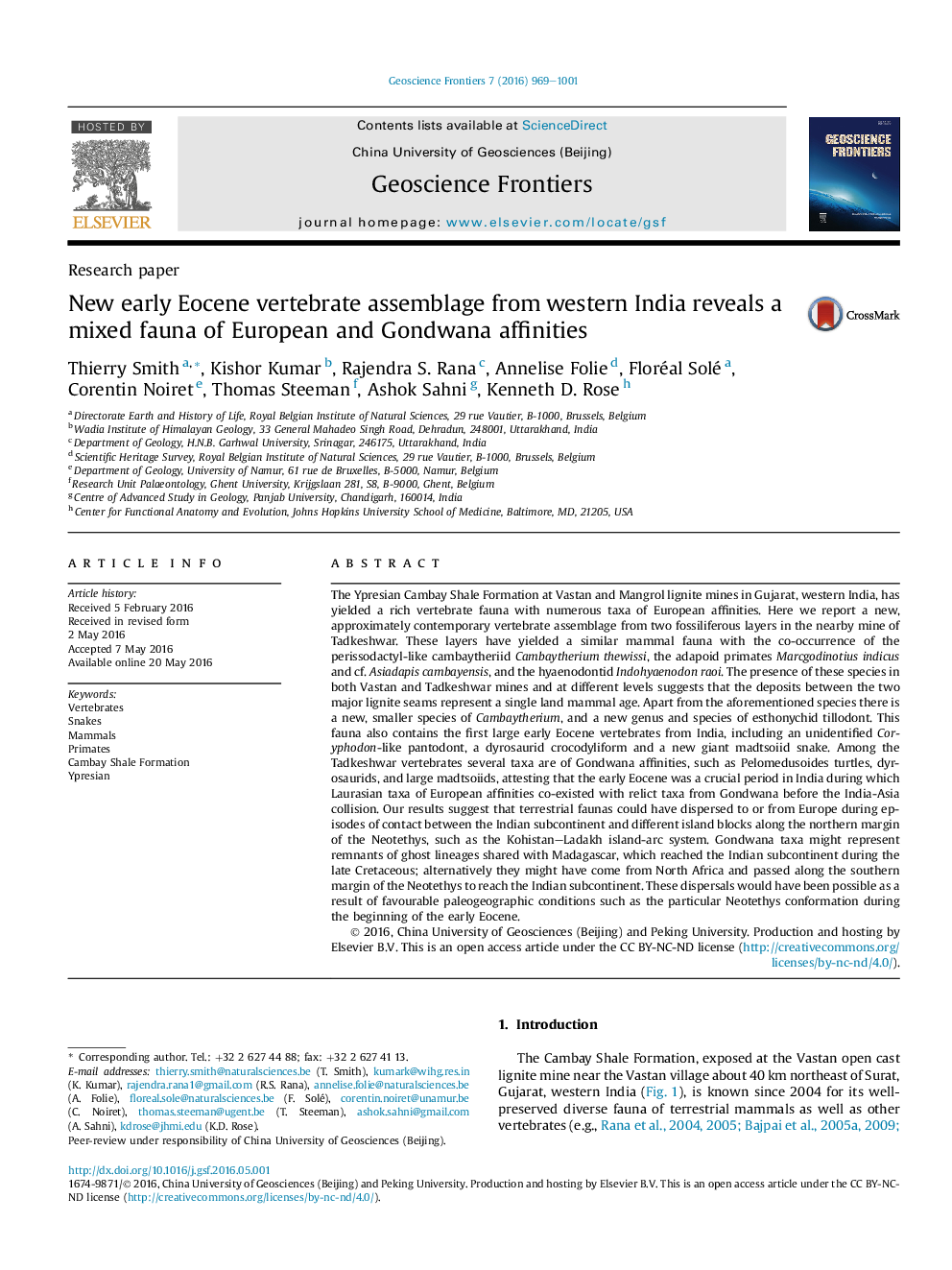| کد مقاله | کد نشریه | سال انتشار | مقاله انگلیسی | نسخه تمام متن |
|---|---|---|---|---|
| 4681454 | 1413816 | 2016 | 33 صفحه PDF | دانلود رایگان |
The Ypresian Cambay Shale Formation at Vastan and Mangrol lignite mines in Gujarat, western India, has yielded a rich vertebrate fauna with numerous taxa of European affinities. Here we report a new, approximately contemporary vertebrate assemblage from two fossiliferous layers in the nearby mine of Tadkeshwar. These layers have yielded a similar mammal fauna with the co-occurrence of the perissodactyl-like cambaytheriid Cambaytherium thewissi, the adapoid primates Marcgodinotius indicus and cf. Asiadapis cambayensis, and the hyaenodontid Indohyaenodon raoi. The presence of these species in both Vastan and Tadkeshwar mines and at different levels suggests that the deposits between the two major lignite seams represent a single land mammal age. Apart from the aforementioned species there is a new, smaller species of Cambaytherium, and a new genus and species of esthonychid tillodont. This fauna also contains the first large early Eocene vertebrates from India, including an unidentified Coryphodon-like pantodont, a dyrosaurid crocodyliform and a new giant madtsoiid snake. Among the Tadkeshwar vertebrates several taxa are of Gondwana affinities, such as Pelomedusoides turtles, dyrosaurids, and large madtsoiids, attesting that the early Eocene was a crucial period in India during which Laurasian taxa of European affinities co-existed with relict taxa from Gondwana before the India-Asia collision. Our results suggest that terrestrial faunas could have dispersed to or from Europe during episodes of contact between the Indian subcontinent and different island blocks along the northern margin of the Neotethys, such as the Kohistan–Ladakh island-arc system. Gondwana taxa might represent remnants of ghost lineages shared with Madagascar, which reached the Indian subcontinent during the late Cretaceous; alternatively they might have come from North Africa and passed along the southern margin of the Neotethys to reach the Indian subcontinent. These dispersals would have been possible as a result of favourable paleogeographic conditions such as the particular Neotethys conformation during the beginning of the early Eocene.
Figure optionsDownload as PowerPoint slide
Journal: Geoscience Frontiers - Volume 7, Issue 6, November 2016, Pages 969–1001
